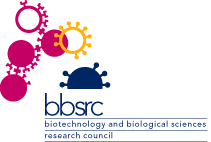AbML is a language for describing the format of both simple and complex antibody-based drugs.
The importance of antibody-based drugs continues to increase with complex multi-specific antibodies (MsAbs) being an up-and-coming class of biologic drugs. The formats of such molecules have diversified hugely generating the need for standard notation. HELM was develpped as a notation language for macromolecule drugs, but is both insufficient and too complex for describing MsAbs.
Antibody Markup Language (AbML) is designed to fulfil this role. It is a notation language specifically for antibody (and T-cell Receptor) formats, which overcomes the limitations of existing languages and can annotate all antibody formats including fusions, fragments, standard antibodies and MsAbs.
AbML is based on describing antibody domains, arranged in a string and separated by connectors, representing antibody chains from N-terminus to C-terminus. The aim is to provide as simple a format as possible while conveying all necessary information.
Each domain is separated by a - character and is numbered sequentially in order of its appearance in the expression (the numbers are given in parentheses after the domain label). In this respect, hinges and artificial linkers can be considered as 'domains' since they are numbered and are separated from neighbouring domains with a - character. Whitespace, including line breaks, is ignored.
Thus a heavy chain of an antibody could be indicated by:
VH(1)-CH1(2)-H(3)-CH2(4)-CH3(5)
Chains are separated by | characters. In a multi-chain structure, every chain must have at least one domain that interacts with a domain on a different chain. Interactions between chains are indicated by a colon following the domain number and a comma-separated list of domains with which the current domain interacts:
VH(1:6)-CH1(2:7)-H(3:10)-CH2(4:11)-CH3(5:12)|
VL(6:1)-CL(7:2)|
VH(8:13)-CH1(9:14)-H(10:3){2}-CH2(11:4)-CH3(12:5)|
VL(13:8)-CL(14:9)
Disulphide bonds between domains are then indicated with curly brackets. Consequently a normal IgG antibody could be described by the AbML:
VH(1:6)-CH1(2:7){1}-H(3:10){2}-CH2(4:11)-CH3(5:12)|
VL(6:1)-CL(7:2){1}|
VH(8:13)-CH1(9:14){1}-H(10:3){2}-CH2(11:4)-CH3(12:5)|
VL(13:8)-CL(14:9){1}
AbML also provides various modifiers to indicate specificities, modifications, engineered domains, artificial linkers, non-immunoglobulin fusion domains, chemical cross-linkers, ADCs, comments, and associated sequence data.
Acknowledgements
AbML was developed between 2020 and 2022 by Maham Ahmad (a Birkbeck Bioinformatics MSc student), James Sweet-Jones and Andrew Martin.
abYdraw was developed between 2021 and 2022 by James Sweet-Jones and Andrew Martin. JS-J is funded by a BBSRC LIDo stdentship.

Further information and Software
Information
Current specification
Paper as submitted
AbML V1.3
Specfication
14.06.24
Download
AbML V1.2
Specfication
02.10.23
Download
AbML V1.1
Specfication
30.06.22
Download
AbML V1.0
Specfication
10.02.22
Download
Information
Current specification Paper as submitted| AbML V1.3 Specfication | 14.06.24 | Download |
| AbML V1.2 Specfication | 02.10.23 | Download |
| AbML V1.1 Specfication | 30.06.22 | Download |
| AbML V1.0 Specfication | 10.02.22 | Download |